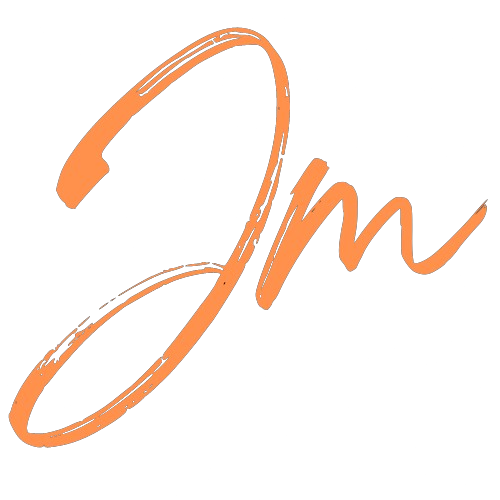Introduction

Agile project management has grown in popularity among organizations looking for flexibility, rapid development, and a strong emphasis on customer satisfaction in today’s fast-changing business landscape.
This approach, known for its iterative development, continuous feedback loops, collaborative attitude, and adaptability, enables teams to successfully manage the obstacles of a dynamic environment.
However, implementing Agile effectively requires more than simply learning a new set of tools and practices. It is about adopting an attitude of continuous improvement and the flexibility to adapt to shifting priorities. While Agile has great potential benefits, fully leveraging it demands a deep understanding of its key concepts as well as the effective application of concrete strategies.
In this blog post, we’ll discuss effective techniques for learning these crucial principles:
- Iterative development: Breaking down projects into smaller, manageable sprints allows for constant feedback and revisions, ensuring the final product meets consumer expectations.
- Continuous Feedback: Creating a culture of open communication, such as daily stand-up meetings, allows for real-time feedback from stakeholders and team members, assuring alignment between everyone.
- Collaboration: Agile promotes collaboration and stakeholder engagement. We’ll look into ways to break down silos and develop a culture of shared ownership, in which people collaborate to achieve a common objective while using their abilities.
- Adaptability: Agile teams ensure their projects remain relevant and effective in the ever-changing business needs, by viewing change as an opportunity rather than a danger, as well as being adaptable and sensitive to altering objectives and market dynamics
This post will provide you with the information and resources you need, to succeed with Agile by uncovering these basic principles. Whether you’re a seasoned project manager looking to improve your current practices, or just getting started with Agile, you’ll gain valuable knowledge and practical guidance on how to manage projects more efficiently, effectively, and responsively in today’s changing world.
The Agile Framework : An Overview

The distinctive features of agile project management include its incremental and iterative methodology, which emphasizes adaptability, teamwork, and ongoing development.
Unlike traditional, sequential techniques such as Waterfall, Agile values adaptability. It divides projects into manageable cycles with frequent feedback and refinement opportunities, ensuring that the final product is tightly aligned with customer requirements.
The Agile Manifesto priorities
- Individuals and interactions over rigid processes
- Working software over extensive documentation
- Customer collaboration over lengthy contracts
- Responding to change over following a static plan
These concepts help to increase flexibility, improve communication, and reduce time to market.
However, Agile has certain potential drawbacks, including a perceived lack of structure, the possibility of scope creep, and team members’ aversion to change. Despite these challenges, Agile’s emphasis on adaptability and iterative development gives it a clear edge over more rigid and linear systems.
Implementing Agile Project Management
Agile project management is a revolutionary strategy that allows teams to adjust to the uncertainty of software development by implementing incremental, iterative work cycles and providing empirical feedback.
Agile Methodologies

Scrum, Kanban, and Lean are the most extensively used approaches.
Scrum frameworks are structured into fixed-length sprints that emphasize collaboration and adaptability.
Kanban uses a visual board for continuous flow and task visualization, with a focus on limiting work in progress (WIP).
Lean concepts, whilst not precisely a methodology, promote waste removal and value maximization by emphasizing continual improvement and quality throughout.
Project complexity, size, and team organization all determine the best option of choice in regards to Scrum or Kanban.
Scrum provides an organized and structured strategy for major projects, but Kanban is best suited for ongoing maintenance and continuous delivery. Lean concepts can be applied to any approach to improve quality and efficiency.
Agile Roles and Responsibilities

The Product Owner, Scrum Master, and Development Team are key roles in an Agile team.
Aligning the product vision and backlog with customer needs and maintaining team transparency are the responsibilities of the visionary leader, referred to as the product owner.
The Scrum Master is a coach and facilitator who removes obstacles, guarantees effective process execution, leads the team through Agile ceremonies, and promotes continuous progress.
The Development Team is a self-organizing, cross-functional team with the abilities needed to finish sprint work. At the end of each sprint, the team aims to deliver high-quality, potentially shippable increments of functionality. These roles work closely together, maximizing their talents and flexibility to successfully accomplish project objectives.
Agile Planning and Backlog Management

A prioritized list of user stories that represent the desired functionalities is called the product backlog. These user stories guarantee that development is in line with the client’s requirements. Estimation and prioritization are critical processes that use methods such as planning poker to measure the complexity of each story and link effort to business value.
Each sprint begins with sprint planning meetings, during which the team, under the guidance of the product owner, commits to attainable user stories ranked in order of importance. By working together, resources are assigned to delivering the most significant features first.
Agile Ceremonies

Short, focused meetings such as Sprint Planning, Daily Stand-Ups, Sprint Reviews, and Retrospectives are essential to the success of agile project management.
These ceremonies promote cooperation, openness, and ongoing development and improvement.
- In Sprint Planning, Teams define task scope and estimated effort, through collaborative planning.
- Daily stand-ups, which are quick meetings, are designed to discuss progress, but also bottlenecks, and provide updates to the whole team.
- Sprint Reviews present completed work to stakeholders and collect important input on any needed changes.
- The Retrospective is used for teams to consider their accomplishments throughout the sprint, pinpoint areas for improvement, and adjust for subsequent sprints.
The Agile team relies heavily on these ceremonies to maintain openness, coherence, and ongoing learning.
Best Practices for Successful Agile Project Management
Embrace a Continuous Learning Mindset
Success in the fast-paced world of Agile requires constant learning. Actively participate in conferences and workshops, be a part of Agile groups, and keep up with the best practices.
Maintaining agility, adaptability, and knowledge is crucial for your team to successfully navigate the ever changing Agile world
Focus on Customer Value
Agile projects are successful when they prioritize the needs of the client and encourage ongoing participation through interactions and feedback channels.
By doing this, projects are kept in line with client expectations, producing useful and relevant outputs.
By incorporating client insights at every stage of the process, from ideation to execution, we not only fullfil but also potentially surpass expectations by providing successful and efficient solutions
Promote Transparency and Open Communication
Transparent and open communication are essential components of effective Agile teams. We establish a secure environment for open communication by encouraging active listening and feedback through regular meetings and implementing effective collaborative technologies. This promotes trust, responsibility, collaboration, and problem-solving, allowing teams to thrive, while completing projects successfully.
Measure and Track Progress Regularly
Agile thrives on data-driven decision-making, which is achieved via metrics such as velocity and burn-down charts.
Such tools enable us to monitor progress, identify bottlenecks, and continually optimize procedures.
By monitoring these critical metrics on a regular basis, teams can tweak their methods and achieve better results, considerably contributing to Agile project success.
Celebrate Successes and Learn from Failures
In Agile, rewarding accomplishments strengthen team morale and motivation. We are, however, not afraid to learn from our mistakes.
We use retrospectives to examine both achievements and failures, identify solutions, and put preventative measures in place to avoid similar problems in the future.
This data-driven approach encourages continual improvement and resilience, which are critical for maintaining team enthusiasm and commitment in the fast-paced environment of Agile project management.
Adherence to Agile Principles
Move beyond methodologies and embrace the underlying concepts outlined in the Agile Manifesto.
These principles, such as prioritizing collaboration and individuals over rigid processes and valuing working software over excessive documentation, promote flexibility, adaptability, and responsiveness to changing priorities.
This Agile approach, which includes customer collaboration and embracing change, is critical to achieving success in Agile projects.
Leveraging the Right Tools
Choose and use the right tools to streamline workflows, boost efficiency, and improve collaboration between teams. While specific technologies differ depending on project requirements and preferences, think about project management tools, version control systems, and communication tools. Remember that tools should support Agile processes, not dictate them.
These features, together with rigorous progress tracking, strict adherence to Agile principles, and considerate use of tools, form a solid and robust framework. This promotes teamwork, innovation, and continued value delivery, allowing teams to adapt to change, provide outstanding value, and develop a culture of continuous improvement.
Continuous Improvement in Agile

Continuous improvement is the foundation for successful Agile project management, highlighting adaptability, learning, and ongoing refinement. It promotes a mindset and practices that enable teams to effectively adjust to changing requirements, challenges, and opportunities.
This continual journey is fueled by the following core principles:
- Iterative development: Breaking down projects into sprints enables for early feedback and adaptation based on learnings
- Transparent communication and collaboration among team members and stakeholders help identify areas for improvement and work collaboratively to carry out modifications.
Unlocking this potential demands specific tools and techniques:-
- Retrospectives: Dedicated meetings to reflect on past sprints, identify accomplishments, problems, and take action for improvement.
- The Plan-Do-Check-Act (PDCA) Cycle helps teams plan improvements, implement them, evaluate results, and modify as needed.
- Use Root Cause Analysis techniques, such as the 5 Whys, to identify and prevent reoccurring problems.
Continuous improvement is an ongoing process rather than a one-time occurrence. Agile teams can achieve outstanding results by embracing continuous learning, adjusting to changing situations, and making successful improvements.
Agile promotes continuous improvement through iterative development, incremental delivery, adaptation based on learnings, and regular communication with stakeholders.
Remember that continuous improvement is an ongoing journey, not a destination.
Challenges in Agile Project Management and Solutions

Agile project management, while praised for its adaptability and flexibility, has its own set of challenges. Let’s discuss the most prevalent roadblocks and provide you with proven strategies for overcoming them, driving your team towards Agile success.
Key Challenges–:
- Managing Changing Requirements: While Agile encourages flexibility, uncontrolled scope creep can derail projects.
- Ensuring Effective Communication: Maintaining clear communication in geographically distant teams can be challenging, despite the importance of collaboration and transparency in Agile.
- Balancing Flexibility and Control: Balancing flexibility and structure is crucial for preventing project deviations and maintaining focus.
Effective strategies-:

- Embrace Prioritization and Backlogs: Utilise product backlogs to prioritize features and adapt to evolving needs. This ensures that changes are consistent with project objectives while limiting scope creep.
- Promote Open Communication: Organizing regular stand-up meetings, sprint reviews, and retrospectives to ensure transparency and information flow among team members. Use communication technologies and collaboration platforms to bridge geographical gaps.
- Clear Framework for Roles and Responsibilities: Establish a clear framework for roles, responsibilities, and decision-making procedures. This promotes a mix of autonomy and accountability, keeping project direction explicit while allowing teams to adapt.
- Embrace Change with Discipline:- Document and communicate changing requirements to all parties. To efficiently manage change, use tools such as a prioritized product backlog.
- Promote open communication:- Encourage an open communication culture in which team members feel free to share ideas, concerns, and feedback. Use communication platforms designed for distributed teams and encourage regular meetings, such as daily stand-ups, to keep everyone on track.
- Maintain the Right Balance:- Strike the right balance between implementing Agile principles and establishing ground rules to maintain order. Use frameworks such as Scrum or Kanban to provide structure while also enabling flexibility.
- Invest in Continuous Learning and Training:- Provide your staff with the skills needed for success in an Agile environment by means of regular training sessions that can greatly improve team performance and project success.
By understanding these challenges and following these proven methods, you can unlock the full potential of Agile project management, creating a collaborative, adaptable, and successful project environment.
Remember that continuous improvement is critical to Agile success. For optimal project management, check your processes on a regular basis, learn from your experiences, and adjust your methods accordingly.
Measuring Agile Success
Agile project management has emerged as a critical component for organizations seeking to improve their project delivery procedures and outcomes in an ever-changing environment. On-time delivery, product quality, customer/user satisfaction, and business value are the fundamental criteria that drive Agile success, with each playing an important part in reflecting the methodology’s effectiveness. These metrics are not independent indicators; they are connected with Agile’s fundamental concepts, which emphasize flexibility, collaboration, and customer happiness.

- On-time Delivery: Agile’s iterative approach prioritizes delivering incremental value quickly and efficiently to ensure project deadlines are met.
- Product Quality: Measures the product’s capacity to fulfill customer expectations using automated quality assurance tools and code reviews, demonstrating Agile’s dedication to high-quality outcomes.
- Customer/User Satisfaction: Agile approaches prioritize direct input to ensure product evolution aligns with user expectations.
- Business Value: Agile projects are expected to produce tangible results ranging from higher revenue to strategic advantages, as well as intangible ones such as strategic positioning or brand enhancement. This demonstrates the methodology’s impact on organizational goals.
Key strategies to amplify Agile success include:
- Customer Satisfaction and Feedback: Agile promotes continual feedback to ensure products meet and exceed user expectations.
- Improved Project Visibility and Control: Agile methodologies, such as burndown charts and backlog refinement, provide a clear picture of project progress and allow for timely modifications to stay on schedule.
- Encouraging Collaboration and Empowering Team Members: Agile places a strong emphasis on team dynamics and member empowerment, creating an environment where a range of ideas and abilities result in creative solutions and improved team cohesion.
In summary, Agile success is a comprehensive measure that goes beyond standard metrics, ensuring a balance between delivering on time, maintaining quality, satisfying customers, and creating economic value.
Aligning project results with Agile principles reinforces not only project success but also the fulfillment of larger company objectives. This alignment generates a culture of ongoing development, collaboration, and adaptation, all of which are essential for navigating today’s complex project environments and attaining long-term growth and success.
FAQs
| Q: How is Agile different from traditional project management? |
| A: Unlike conventional methods with set scopes and phases, Agile is iterative, which means projects are divided into smaller, more adaptable chunks known as “sprints.” This enables continuous improvement based on ongoing feedback and changing requirements. |
| Q: Is Agile restricted to software development? |
| A: Although Agile began in software development, its flexibility allows it to be used to a wide range of projects with uncertain or changing requirements. This enables teams to adapt rapidly and provide value efficiently. |
| Q: How can I decide if Agile is appropriate for my project? |
| A: Agile is a good option if your project has variable requirements, short deadlines, and a collaborative workplace. Conventional procedures, on the other hand, may be more suited for projects with clearly defined requirements and relatively little room for modification. |
| Q: What are the key challenges to implementing Agile? |
| A: Key challenges include overcoming resistance to change, managing stakeholder expectations, and developing effective communication among self-organizing teams. However, with adequate planning and training, these issues are achievable. |
| Q: How do I define success in an Agile project? |
| A: Look beyond simply meeting deadlines. The ultimate measure of success is increased team productivity, better product quality, and higher customer happiness. Metrics such as “velocity” and client feedback offer crucial insights. |
| Q: Why is Agile considered revolutionary? |
| A: Agile’s emphasis on flexibility and adaptation enables teams to respond rapidly, produce value on a continual basis, and effectively satisfy client expectations, making it an invaluable strategy in today’s changing world. |
| Q: What advantages may teams gain from Agile? |
| A: By embracing Agile, teams may improve productivity, quality, cooperation, adaptability, and customer happiness. |
| Q: Why is Agile knowledge so important for project professionals? |
| A: Understanding Agile principles helps project managers promote communication, manage expectations, and drive teams through the iterative process. This knowledge enables them to maximise the benefits of Agile and deliver effective projects in a changing environment. |
Conclusion

Agile is crucial in accomplishing project success and organizational agility. By adopting Agile, teams can gain various advantages such as:
- Enhanced flexibility: Agile methodologies enable teams to react swiftly to changes in requirements or current market conditions.
- Enhanced collaboration: Agile promotes constant communication and cooperation amongst team members, resulting in improved decision-making.
- Faster value delivery: Agile ensures a quicker return on investment for stakeholders by delivering functional features gradually through iterative development.
- Enhanced product quality: Agile methodology places a strong emphasis on ongoing testing and feedback, which leads to a better final product.
Remember that adopting Agile requires not only learning the principles, but also adopting a flexible and collaborative mindset. Teams may achieve long-term success in today’s ever-changing environments by constantly learning, adapting, and working together to realize the full potential of Agile.


